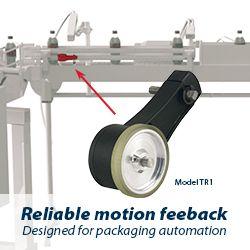Robots to Reside in more than 1 in 10 American Households by 2020, Finds Juniper Research
Convenience Trumps Compromise, With AI Improving Slowly
Hampshire, UK: 15th December 2015: New data from Juniper Research has forecast that over 1 in 10 American households will own a consumer robot by the end of the decade, up from under 1 in 25 this year. At this early stage in the market, shipments are expected to be dominated by so-called ‘task oriented robots assigned to take over household chores, such as lawn mowing or vacuum cleaning.
Devices such as iRobots Roomba and Droplet Robotics Sprinkler offer tremendous ‘fire and forget type convenience for consumers, and despite obvious design compromises, are likely to usher in a new era of housekeeping.
AI Remains a Work-in-Progress
The new research, Worldwide Consumer Robotics: Markets & Strategies 2015-2020, found that the performance of more complex robots, such as SoftBanks Pepper, while improving, are heavily limited by present-day technology. Thus, in order to meet consumer expectations, smarter, more contextually aware robots are required.
Achieving a leap forward in AI (artificial intelligence) will demand not only more computing power, but also much greater efficiency if processing is to be offloaded from the cloud. Therefore, new approaches in chip design, such as IBMs TrueNorth, are likely to become important in the medium-term.
Price and Trust Key Hurdles
Additionally, the research found that cost and trust are key factors in preventing mass take-up. Component economies of scale have yet to be achieved, while R&D costs are high. Meanwhile, studies indicate that trust between robots and humans is rapidly eroded, even if a robot is able to perform better than a human on average.
‘The state of consumer robotics could be compared to the PC in the late 70s noted research author Steffen Sorrell. ‘Venture capitalist and corporate investment has ramped up tremendously recently - they know that this is the start of a paradigm shift in the way we use and interact with machines.
Other key findings
Healthcare: an ageing global population means that the scope for healthcare robots is beyond doubt in the long-term.
3D Printing: falling 3D printer costs and new printer capabilities offer developers to slash the cost of prototyping.
The whitepaper, Consumer Robotics ~ Rise of the Machines, is available to download from the Juniper Research website together with further details of the new research and interactive dataset.
Juniper Research provides research and analytical services to the global hi-tech communications sector, providing consultancy, analyst reports and industry commentary.
Featured Product

Model TR1 Tru-Trac
The Model TR1 Tru-Trac® linear measurement solution is a versatile option for tracking velocity, position, or distance over a wide variety of surfaces. An integrated encoder, measuring wheel, and spring-loaded torsion arm in one, compact unit, the Model TR1 is easy to install. The spring-loaded torsion arm offers adjustable torsion load, allowing the Model TR1 to be mounted in almost any orientation - even upside-down. The threaded shaft on the pivot axis is field reversible, providing mounting access from either side. With operating speeds up to 3000 feet per minute, a wide variety of configuration options - including multiple wheel material options - and a housing made from a durable, conductive composite material that minimizes static buildup, the Model TR1 Tru-Trac® is the ideal solution for countless applications.
